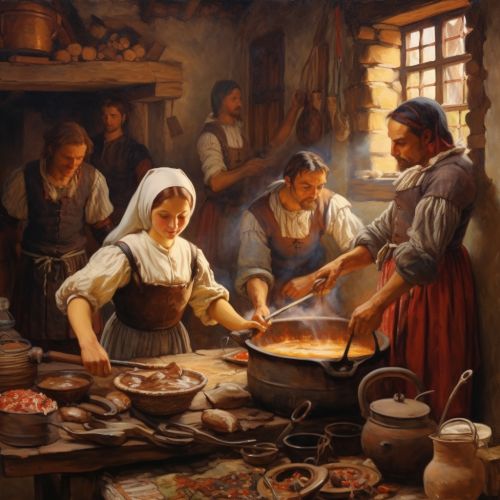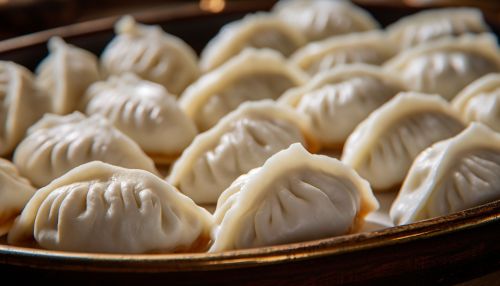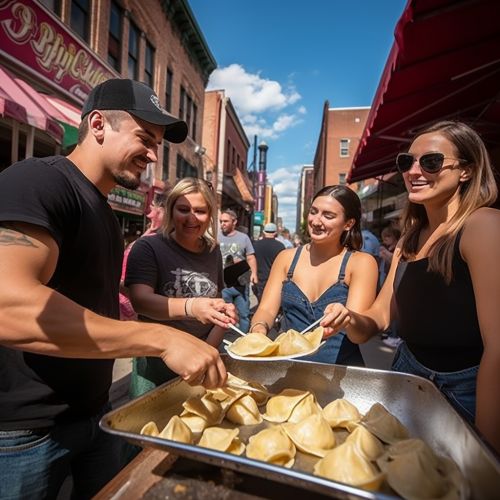Pierogi
Origins and History
Pierogi, also known as varenyky, are filled dumplings that originated in Central and Eastern Europe. The exact origins of pierogi are difficult to trace as they have been a staple food in these regions for centuries. However, it is widely believed that they were introduced to Poland in the 13th century by Saint Hyacinth of Poland, who brought them back from his journey to Kiev.


Etymology
The word 'pierogi' is plural in Polish, the singular form being 'pieróg'. It is derived from Old Church Slavonic 'pirŭ', which means 'feast'. The Ukrainian term 'varenyky' comes from the word 'varyty', meaning 'to boil', which is the primary cooking method for these dumplings.
Preparation and Varieties
Pierogi are made by wrapping a thin dough around a filling and then boiling them. The dough is usually made from simple ingredients: flour, eggs, and water. The fillings can vary widely, but common ones include potato, sauerkraut, ground meat, cheese, and fruits. After boiling, they are often sautéed in butter and onions for added flavor.


There are many regional variations of pierogi. In Poland, 'pierogi ruskie' (Russian pierogi) filled with potato and cheese are popular. In Ukraine, 'varenyky' with a cherry or other fruit filling are a common dessert. In Slovakia, 'bryndzové pirohy' are filled with sheep cheese and are a traditional dish.
Cultural Significance
Pierogi play a significant role in the culinary traditions of many Central and Eastern European countries. They are often served at festive occasions such as weddings and holidays, including Christmas and Easter. In Poland, 'pierogi ruskie' are a traditional dish for the Catholic holiday of Good Friday.


In recent years, pierogi have gained popularity worldwide, with many countries adopting and adapting this versatile dish. In the United States, for example, pierogi are often deep-fried, a cooking method not traditionally used in their countries of origin.
In Popular Culture
Pierogi have also made their way into popular culture. In the United States, the city of Pittsburgh, known for its large Polish community, holds an annual 'Pittsburgh Pierogi Festival'. The city's baseball team, the Pittsburgh Pirates, even has pierogi mascots that race during games.


